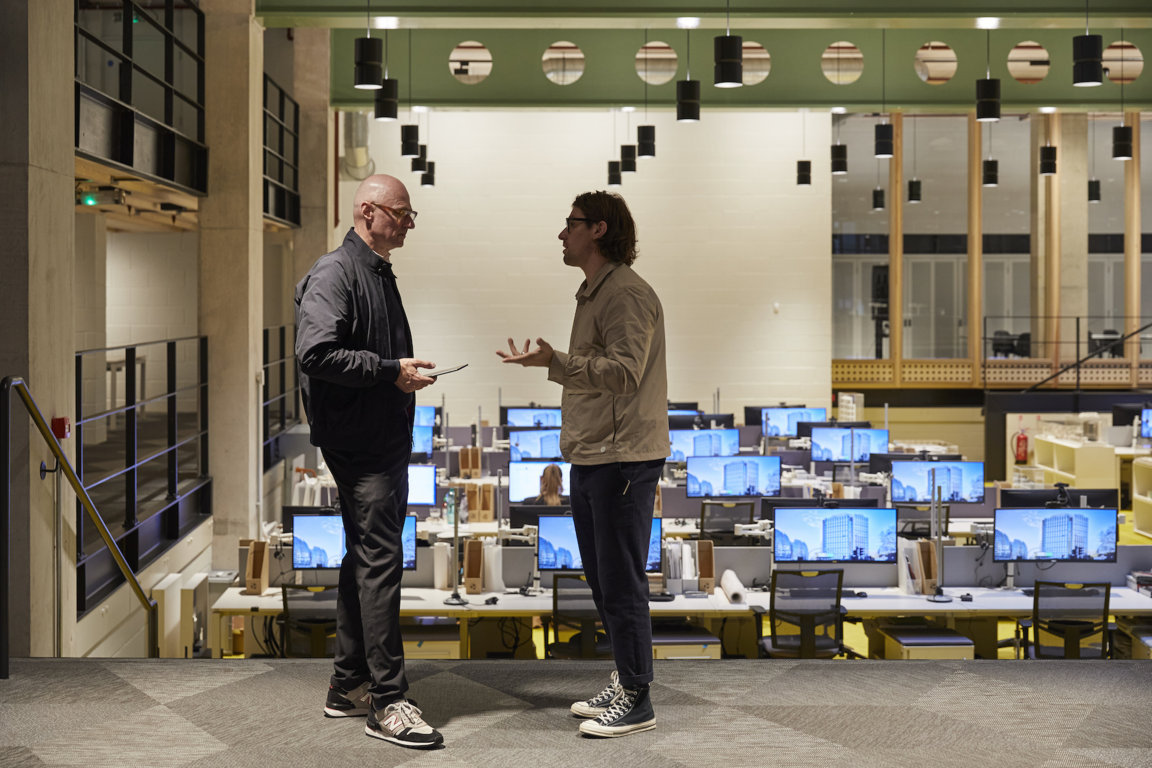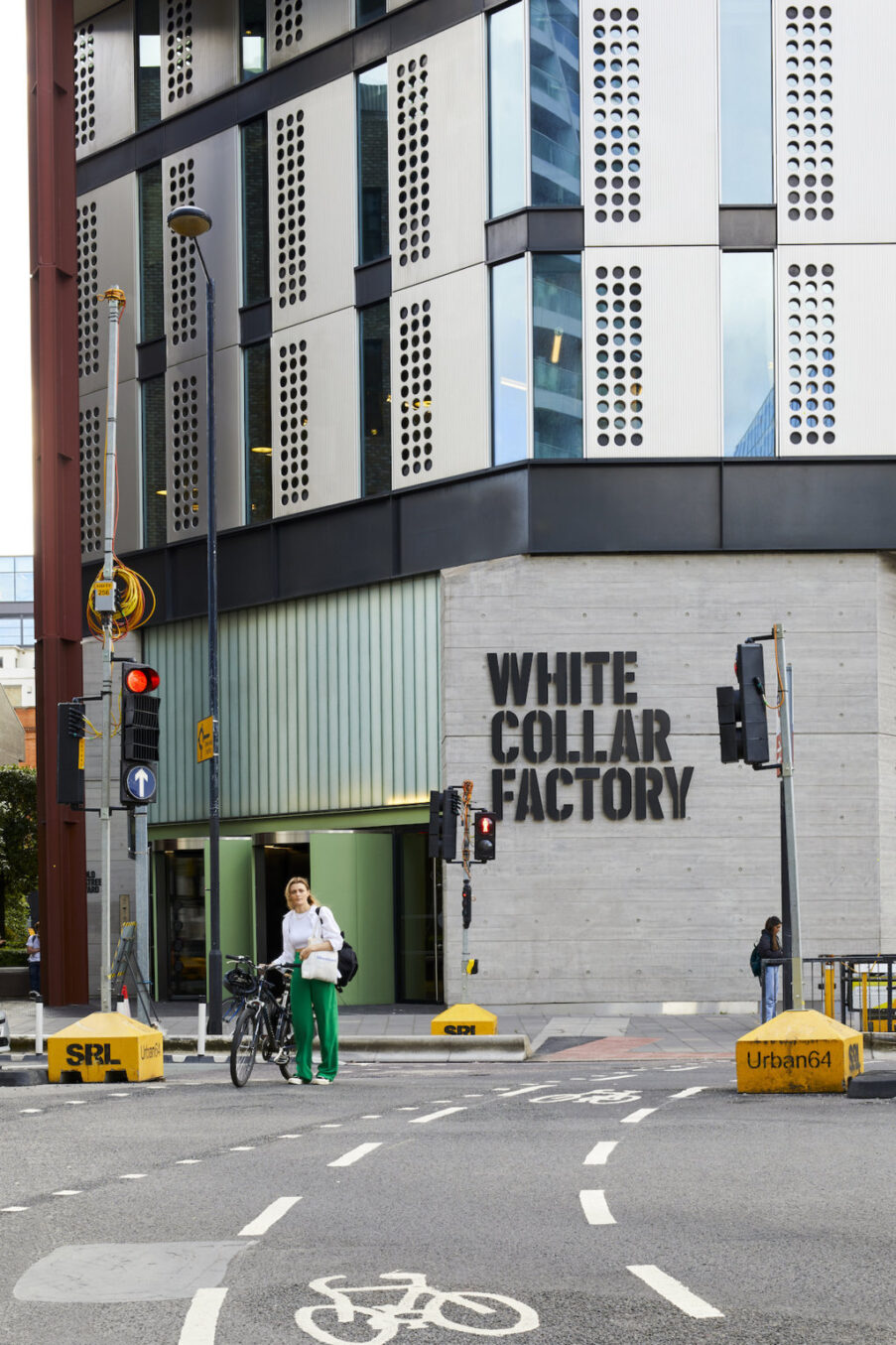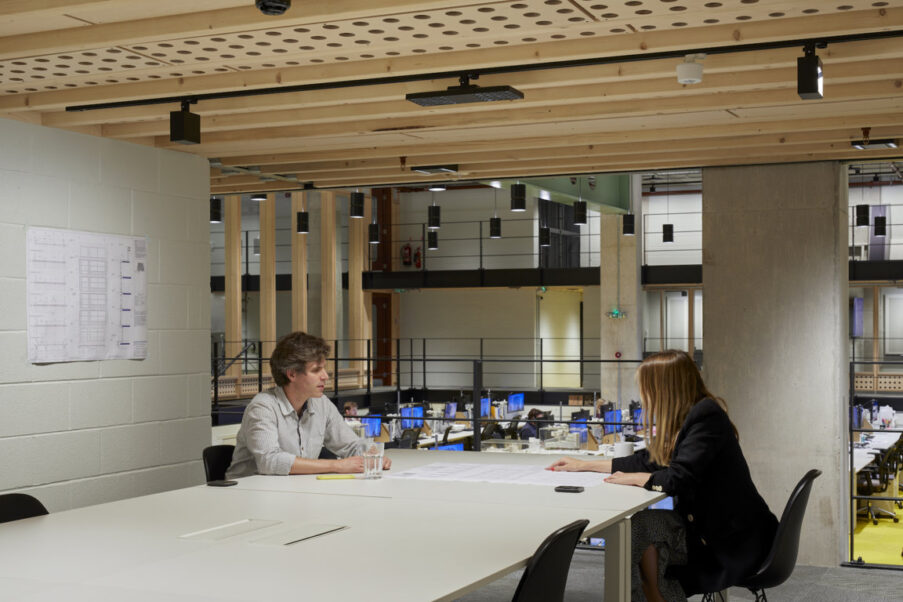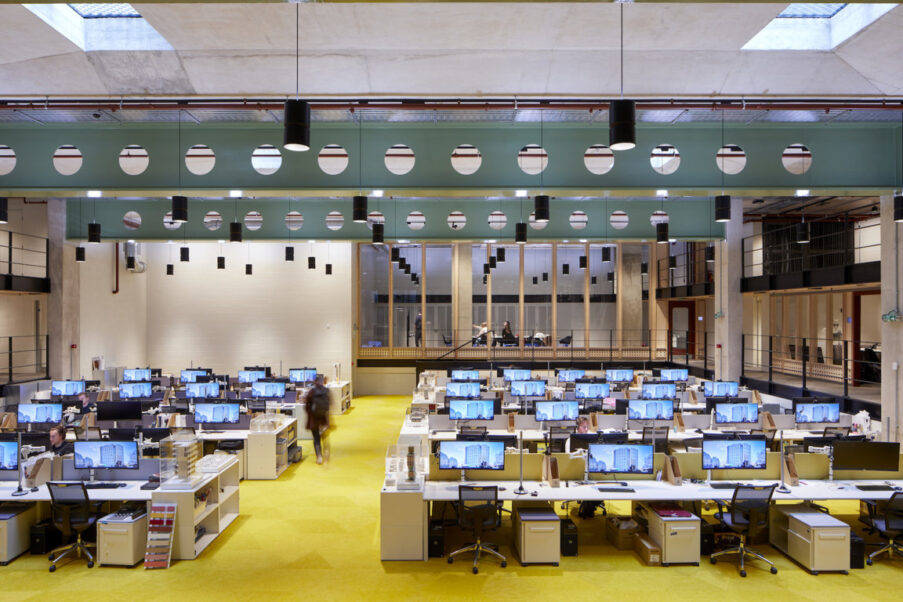The White Collar Factory is one of London’s pioneering new-build office projects and, out of the blue, even the basement becomes a fully-fledged working environment. The initial plan was to turn this space into a restaurant but, the architects, Allford Hall Monaghan Morris (AHMM), then considered making it a vibrant and dynamic open office space. The 983-square-foot area, whose only source of daylight is four small skylights, was cleverly transformed into a creative and flexible center for AHMM’s staff. What’s made it possible was an innovative ERCO lighting system based on the of Human Centric Lighting’s concept.
Sustaining the circadian rhythm
The building sets a new standard for the industry with its wide, flexible floor and high ceilings, not to mention the entrance lobby that doubles as a coworking area and 150-foot jogging track.
Of course, it was more difficult to turn the basement into a functional office than the upper floors, which had windows that could be opened throughout. But it also had features that no other floor had, such as an eight-foot-high ceiling, which creates the feeling of a large pavilion. “Basically, it had everything you look for in a project, except for the windows,” says designer Simon Allford. “We embraced the idea that no space is impossible, and that any space can become magical. It all becomes an exercise to make it work.”
ERCO’s Human Centric Lighting system can provide natural lighting variations to work environments throughout the day. Other lighting systems can create a blanket of fixed light, while Atrium’s dual-focus pendant luminaires help support circadian rhythms, with dimming capabilities, adjustable white light tones and glow control. These suspended, can-shaped fixtures create a lighting pattern on ceilings, achieving both upward and downward illumination. Electrified track downlights ensure that light is directed only to where it is needed, increasing visual comfort. Pantrac electrified track luminaires also illuminate walls to elicit a feeling of openness and expansiveness in spaces.
“You look at the staging, you look at the changing nature of the body,” Allford says. The goal, he explains, is to show how you can create dynamic lighting conditions even when you’re dealing with a windowless environment, offering an alternative to the standardized lux amounts prescribed by the lighting industry. In this way, light becomes a research project in itself.
About ERCO
ERCO, the light factory based in Lüdenscheid, is a leading international company specializing in architectural lighting with LED technology. This family-owned company founded in 1934 operates globally in 55 countries with independent distribution structures and partners. The lighting tools are created in close cooperation with architects, lighting designers and electrical planners and are mainly used in the following application areas: Work and Culture, Community and Public & Outdoor, Contemplation, Living, Shop and Hospitality. ERCO understands light as the fourth dimension of architecture and supports designers in the realization of their ideas with efficient, high-precision lighting solutions.
A flexible working environment
The changing nature of today’s workplaces, particularly as a result of Covid-19, means that flexibility must be ingrained in interiors from the start of the design process.
ERCO’s system supports this need for flexibility. Not least because of the Casambi Bluetooth control system with which the luminaires can be easily programmed and adapted to new layouts. Each desk is then equipped with its own Lucy desk fixture, giving employees more control over their immediate environment. “It’s a theatrical idea of flexibility,” Allford says.
“Years ago, at a popular furniture store, I saw a sign that read ‘work is not a place you go, but a thing you do,'” Allford says again. “You could say that the pandemic has reinforced that notion, but I strongly disagree. In my opinion, work is a place where you go to perform activities. The idea of getting out of the house, going into a different kind of environment and meeting people is part of the culture of creativity. It’s absolutely vital.”
For more information: www.erco.com









